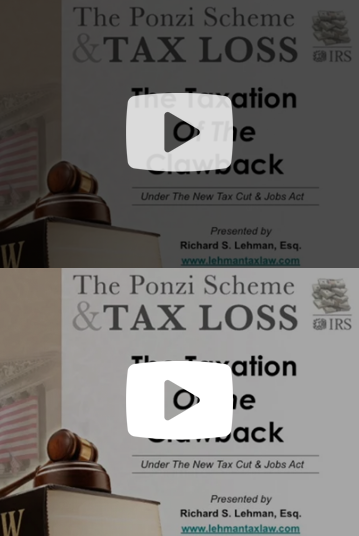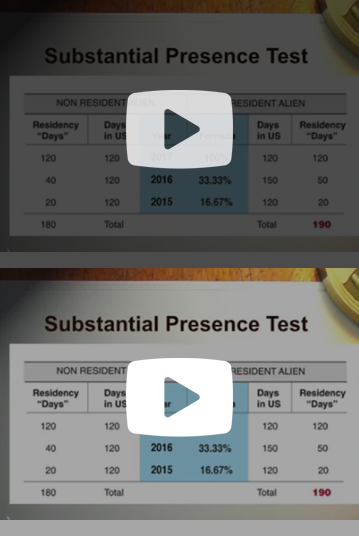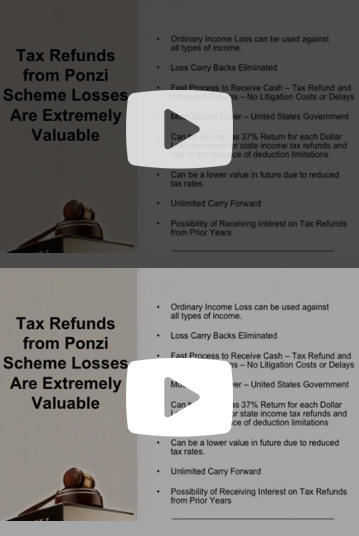COVID-19
When it comes to taxes, COVID-19 (“COVID” or the “virus”) giveth and taketh away. There is no question that trillions of dollars have been lost and Americans and the United States has suffered on the human side and the financial side.
WHO WOULD EVER HAVE THOUGHT THAT IT WAS GOING TO BE THE INTERNAL REVENUE CODE THAT WOULD BE USED TO BRING A BIT OF PEACE TO THE AMERICAN BUSINESS PERSON IN THE FORM OF VALUABLE TAX REFUNDS FROM YEARS THAT GO BACK AS FAR AS 2013.
The almost instantaneous clever solution funded by the Treasury, was to reverse the existing law that had been instituted by the new Trump Tax Bill of 2018. Instead of doing away with prior “net operating loss deduction’s”; a new code section, allows taxpayers to claim tax refunds based on losses stemming far into the past.
The new law, (the “Cares Act”) that is in response to the Corona Virus Pandemic, allows taxes paid by the taxpayer in the five (5) years previous to 2018, 2019 or 2020, to be refunded to the taxpayer as a reimbursement for losses stemming from any of the years 2018, 2019 and 2020.
Prior to March, 2020, under the new Trump Tax Bill it was no longer possible to receive any tax refunds from past losses after the year 2017.
The new law restored the concept of the allowance of “net operating losses” that can be restored in the form of tax refunds.
The Cares Act §2303 Internal Revenue Code (“I.R.C.”)
The CARES Act expands taxpayers’ ability to deduct Net Operating Losses (“NOLs”) arising before the 2021 taxable year.
The CARES Act allows an NOL incurred by a taxpayer either corporate or individual in tax years beginning after December 31, 2017 and before January 1, 2021; to be carried back to each of the five tax years preceding the tax year of the NOL. An NOL arising during this period that a taxpayer elects to carry back must be carried back to the earliest year within the five-year period in which the taxpayer has taxable income. A taxpayer may elect to waive the carryback period.
As a result of changes under the CARES Act, taxpayers with eligible NOLs may now be able to claim a refund for tax returns from prior tax years. The CARES Act did not modify IRC Section 172(b)(3), to a taxpayer, where advantageous. It can still waive the carryback and elect to carry NOLs forward to subsequent tax years.
Warning, before claiming an NOL carryback for a prior tax year, taxpayers must want to consider how other tax attributes e.g., foreign tax credits, that were absorbed in a prior year, may now be displaced as a result of the carryback.
- Before relying on the Cares Act a taxpayer must be aware of a host of federal tax provisions that need to be considered; in order to coordinate the best use of these losses.
- The five-year period provides many planning opportunities using tax periods and accounting methods that may be available to maximize any available benefits.
What are the options available to taxpayers in accessing a refund as a result of these new carryback provisions?
Taxpayers may request a refund for the year to which an NOL is carried back through one of two methods. For C corporations, a refund can be obtained by filing Form 1120X, Amended U.S. Corporation Income Tax Return, or Form 1139, Corporation Application for Tentative Refund. For individuals, a refund can be obtained by filing Form 1040X, Amended U.S. Individual Income Tax Return, or Form 1045 Application for Tentative Refund. Estates and trusts may also use the Form 1045, or file an amended Form 1041, U.S. Income Tax Return for Estates and Trusts.
Taxpayers with 2018 and 2019 NOLs should promptly review their options to carry back any such NOLs and seek any applicable tax refunds.



